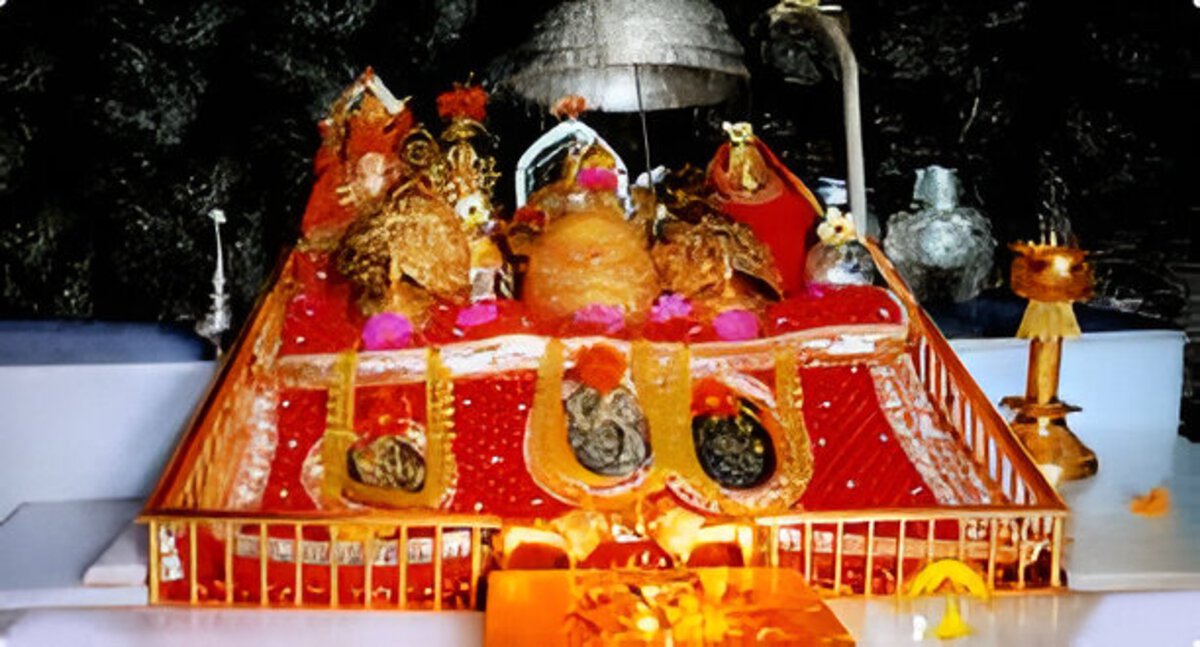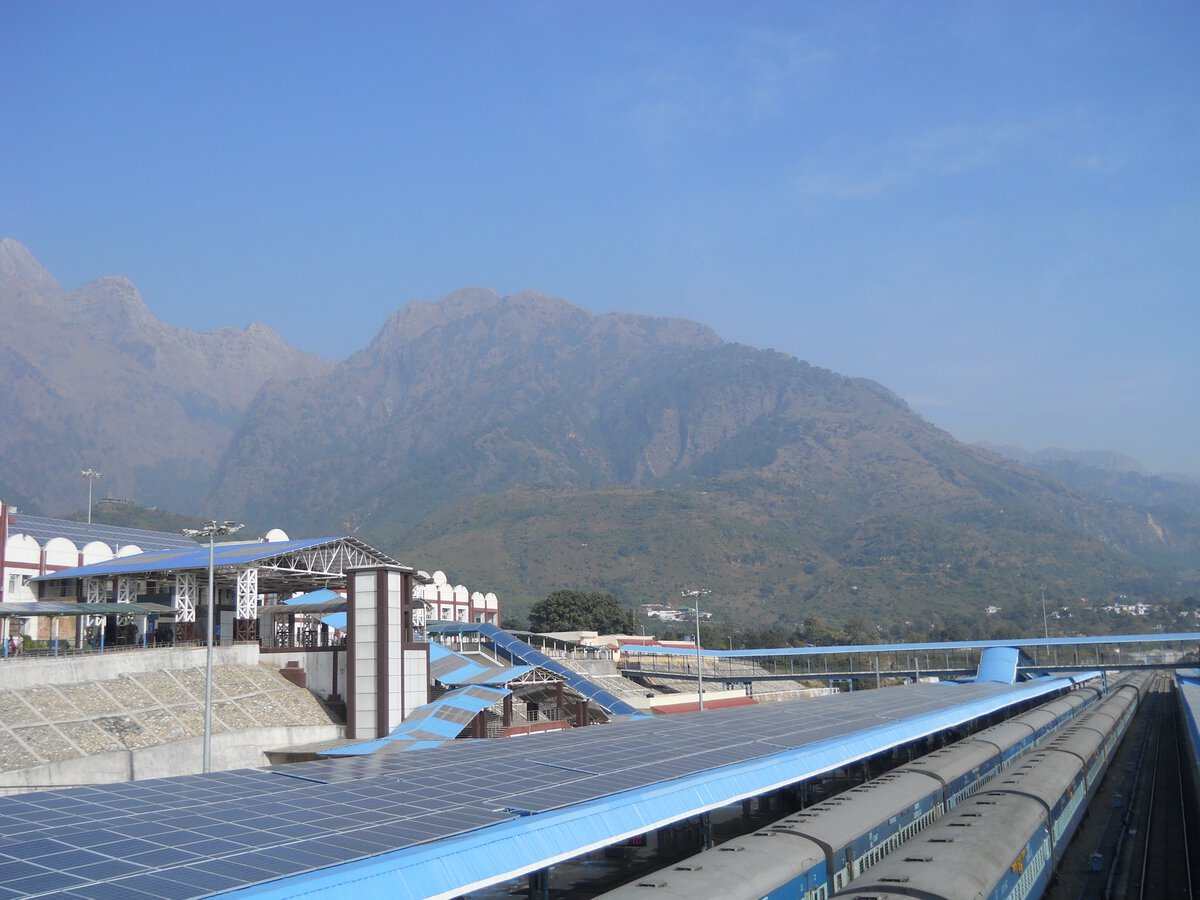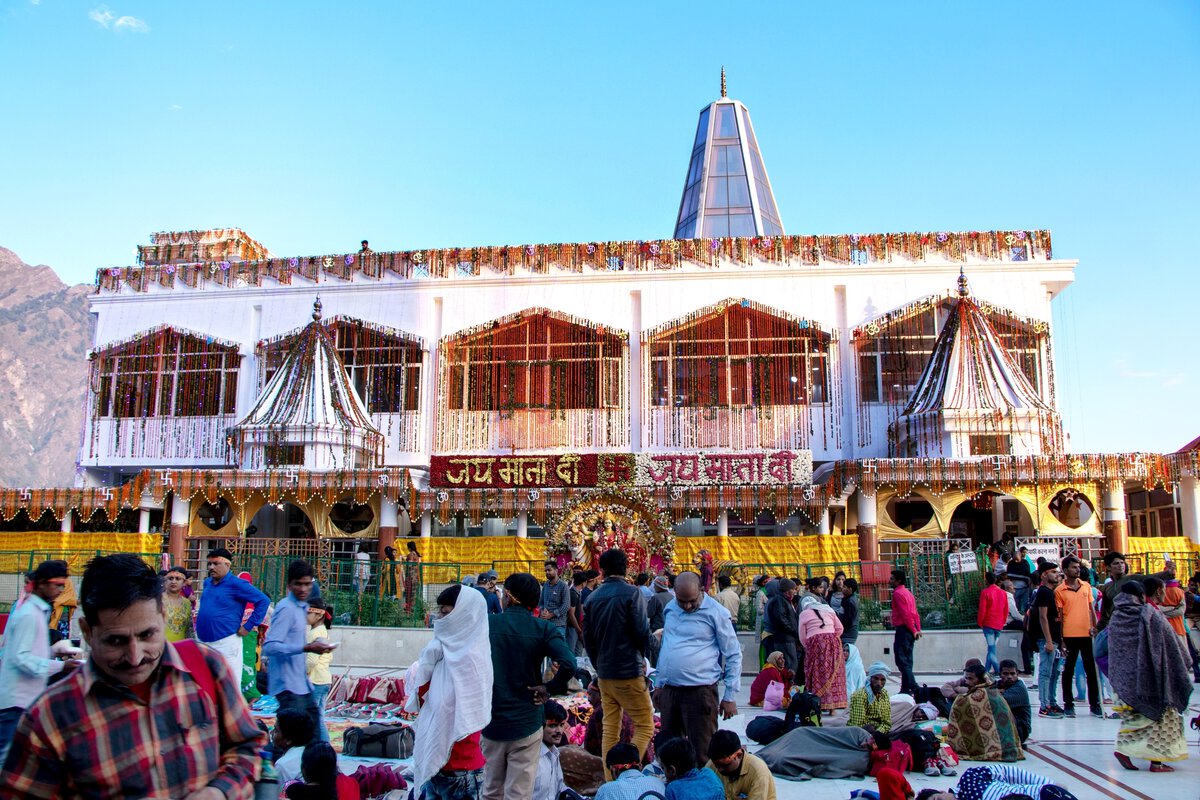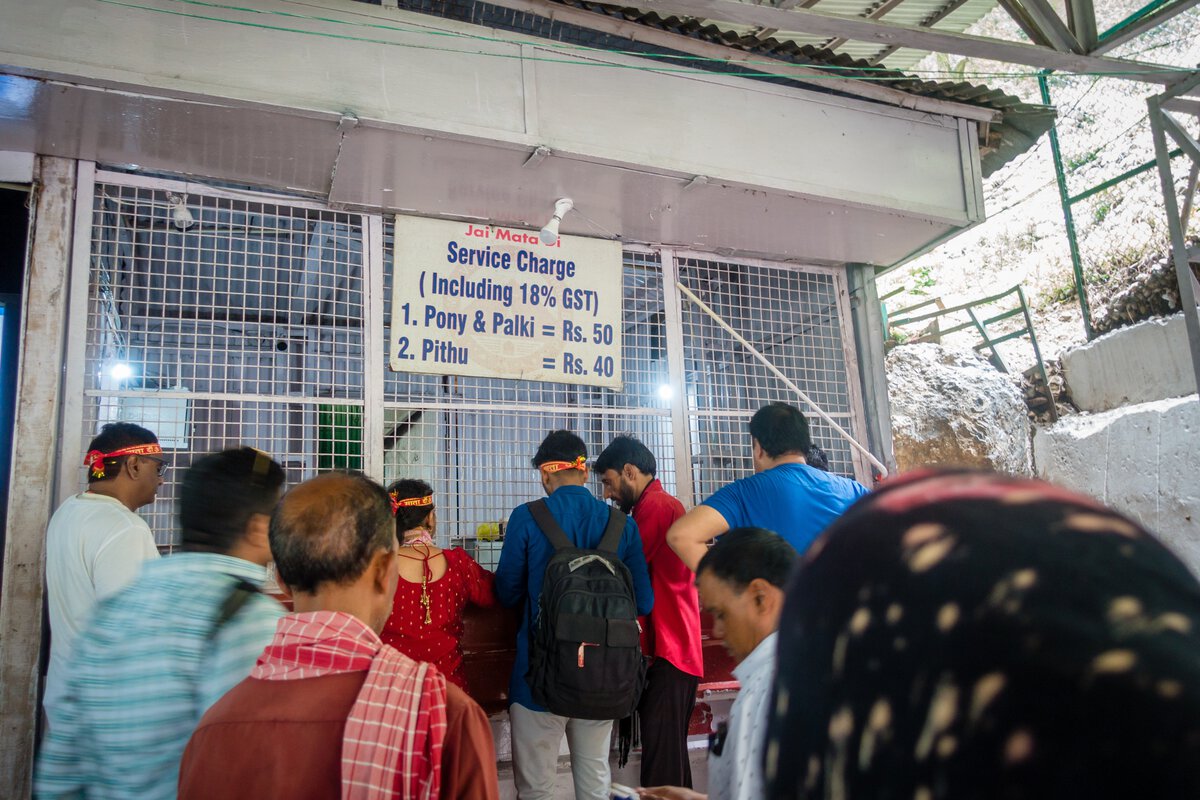March 24, 2025
A Spiritual and Practical Guide to Vaishno Devi Yatra with Family
CM Content Team
The Vaishno Devi temple, located in the divine Trikuta Hills of Jammu and Kashmir, is a sacred place where devotion comes alive. A Vaishno Devi trip is not just a pilgrimage—it’s a spiritual calling known as “Mata Rani’s bulawa”. The Vaishno Devi yatra begins when the heart feels drawn to her holy cave, guiding devotees to walk the 13 km path from Katra or take a helicopter ride. Whether you're exploring ways to do Vaishno Devi yatra, planning a Vaishno Devi trip with family, or learning how to reach Vaishno Devi, this guide to Vaishno Devi will help you begin with faith. Jai Mata Di!
The Divine Call: Mythology and Spiritual Significance
The Sacred Landscape: Trikuta Hills and Divine Ambience
About the Bhavan
Best Time to Go on Vaishno Devi: When the Divine Path Feels Just Right
How to Reach Vaishno Devi: Your Journey Begins at Katra
Ways to Do Vaishno Devi Yatra: Choose Your Path to the Divine
Temples to Visit on a Vaishno Devi Yatra and Vaishno Devi Prasad: Beyond the Bhawan
Darshan, Aarti, and Prasad: The Sacred Highlights of the Vaishno Devi Yatra
Registration and Guidelines: Preparing for a Blessed Vaishno Devi Yatra

The legend of Vaishno Devi forms the heart of the Vaishno Devi yatra, embodying the essence of Shakti, the divine feminine energy. Born as a union of Maha Kali, Maha Lakshmi, and Maha Saraswati, Vaishnavi came to earth to uphold dharma. She meditated in the Trikuta Hills, where the sacred Vaishno Devi temple now stands. When pursued by Bhairon Nath’s ill intention, she revealed her divine form and defeated him, blessing him with moksha.
Today, every Vaishno Devi trip retraces her spiritual journey. Pilgrims believe no one visits without Mata Rani’s bulawa—a divine call. This sacred connection transforms the Vaishno Devi yatra into more than a trek—it becomes a soul-cleansing experience filled with grace, faith, and inner awakening.
The Vaishno Devi yatra begins the moment you leave Katra and step onto the sacred trail through the Trikuta Hills. Surrounded by mist, chants of “Jai Mata Di,” and divine silence, your Vaishno Devi trip becomes more than a journey—it becomes prayer in motion. From Banganga to Ardhkuwari, each stop holds deep spiritual meaning. The serene hill views and sacred ambience make even the toughest climbs feel lighter. Whether you trek, ride a pony, or take a helicopter ride, every path among the ways to do Vaishno Devi yatra leads your heart closer to Mata Rani’s divine presence.

The Holy Bhawan is the spiritual heart of the Vaishno Devi yatra, housing the Sanctum Sanctorum, where Mata reveals herself as three Holy Pindies—Maha Kali, Maha Lakshmi, and Mata Saraswati. As pilgrims approach, the first glimpse of Bhawan, seen 1.5 km before arrival, fills them with renewed energy and devotion. According to legend, after leaving Garbh Joon cave, Mata reached the Holy Cave and defeated Bhairon Nath. Today, the Shrine Board has ensured all facilities at Bhawan—accommodation, medical dispensary, bhojanalayas, cloakrooms, and more—making this final stop of the Vaishno Devi trip a deeply fulfilling and well-supported experience.

The best time to go on the Vaishno Devi yatra depends on what your heart seeks—peace, celebration, or pleasant weather. Each season offers something unique for your Vaishno Devi trip.
The best time to visit Vaishno Devi is not just about the season—it’s when you feel Mata Rani’s divine call, her bulawa.

Before starting the sacred Vaishno Devi yatra, pilgrims must first arrive at Katra, the official base town located in the Reasi district of Jammu and Kashmir. Every Vaishno Devi trip begins here, and with modern transport options, getting to Katra is easier than ever.
Once you reach Katra, the divine energy becomes palpable. Surrounded by the Trikuta Hills, you can sense that Mata Rani’s bulawa has brought you here. Now, choose among the ways to do Vaishno Devi yatra and begin your climb with faith.

Once you’ve reached Katra, your sacred ascent to Mata Vaishno Devi’s Bhawan begins. This 13-kilometer journey up the Trikuta Hills is more than a climb—it's a spiritual offering. There are several ways to do Vaishno Devi yatra that cater to different needs. No matter the path you choose, every step is blessed. Here’s how you can reach the Bhawan:

Darshan, Aarti, and Prasad: The Sacred Highlights of the Vaishno Devi Yatra

Your Vaishno Devi trip is incomplete without experiencing the three spiritual pillars of the yatra—Darshan, Aarti, and Prasad. Each one carries divine significance and deepens your connection with Mata Rani.
At the Holy Bhawan, devotees witness the sacred Holy Pindies—representing Maha Kali, Maha Lakshmi, and Mata Saraswati. This moment of darshan inside the Sanctum Sanctorum is the culmination of the entire Vaishno Devi yatra. The peaceful aura inside the cave calms the heart, and as you bow your head before Mata Rani, all worldly worries melt away. Pilgrims often describe this encounter as life-changing—a true moment of spiritual awakening.
The Aarti is one of the most powerful rituals at the shrine. It is performed daily twice- just before sunrise and just after sunset. The priests begin by purifying themselves and then offer the Goddess milk, honey, ghee, and water. She is dressed in beautiful traditional attire, and the temple resonates with the chanting of mantras, the glow of diyas, and the fragrance of incense.
Devotees can witness the Atka Aarti by booking in advance on the official Shrine Board website. For those who cannot be there in person, a Live Aarti broadcast allows them to join spiritually from anywhere in the world.
After darshan, every devotee receives Vaishno Devi prasad, a symbol of Mata’s blessings. The prasad typically includes mishri, dry fruits, dry coconut, and cardamom, neatly packed in a red pouch marked “Jai Mata Di.” This sacred gift can be collected at official counters in Bhawan or Shrine Board shops in Katra.
Even devotees returning by helicopter or ropeway make sure to collect the prasad before leaving. Many bring it home to share with loved ones or place it on their family altars as a blessing from Mata Rani.

Before setting foot on the sacred trail from Katra to the Bhawan, every devotee must complete an important ritual—not just of the soul, but also of protocol: the Vaishno Devi Yatra registration. This step ensures your journey is safe, well-managed, and in alignment with the divine discipline that surrounds Mata Vaishno Devi’s abode.
To begin your Vaishno Devi yatra, you must register and obtain a Yatra RFID card. Without it, entry beyond Banganga—the starting point of the trek—is not permitted.
As your Vaishno Devi trip ends, what you carry home is more than prasad—it’s peace, grace, and spiritual renewal. The Vaishno Devi yatra, whether done on foot, by helicopter ride, or with loved ones, leaves your heart lighter and your soul uplifted. The best time to go on Vaishno Devi is when Mata Rani’s bulawa touches your spirit. Whether you walk the trail or choose other ways to do Vaishno Devi yatra, each path is sacred. Trust the call, embrace the journey, and feel her divine presence with every step. Your soul’s journey has just begun.
Mahindra Holidays & Resorts India Ltd. (MHRIL), a part of Leisure and Hospitality sector of the Mahindra Group, offers quality family holidays primarily through vacation ownership memberships and brings to the industry values such as reliability, trust and customer satisfaction. Started in 1996, the company's flagship brand ‘Club Mahindra’, today has over 290,000 members , who can holiday at 140+ resorts in India and abroad.